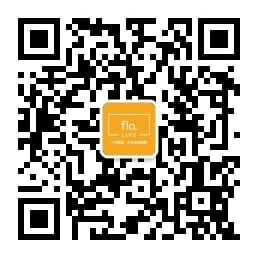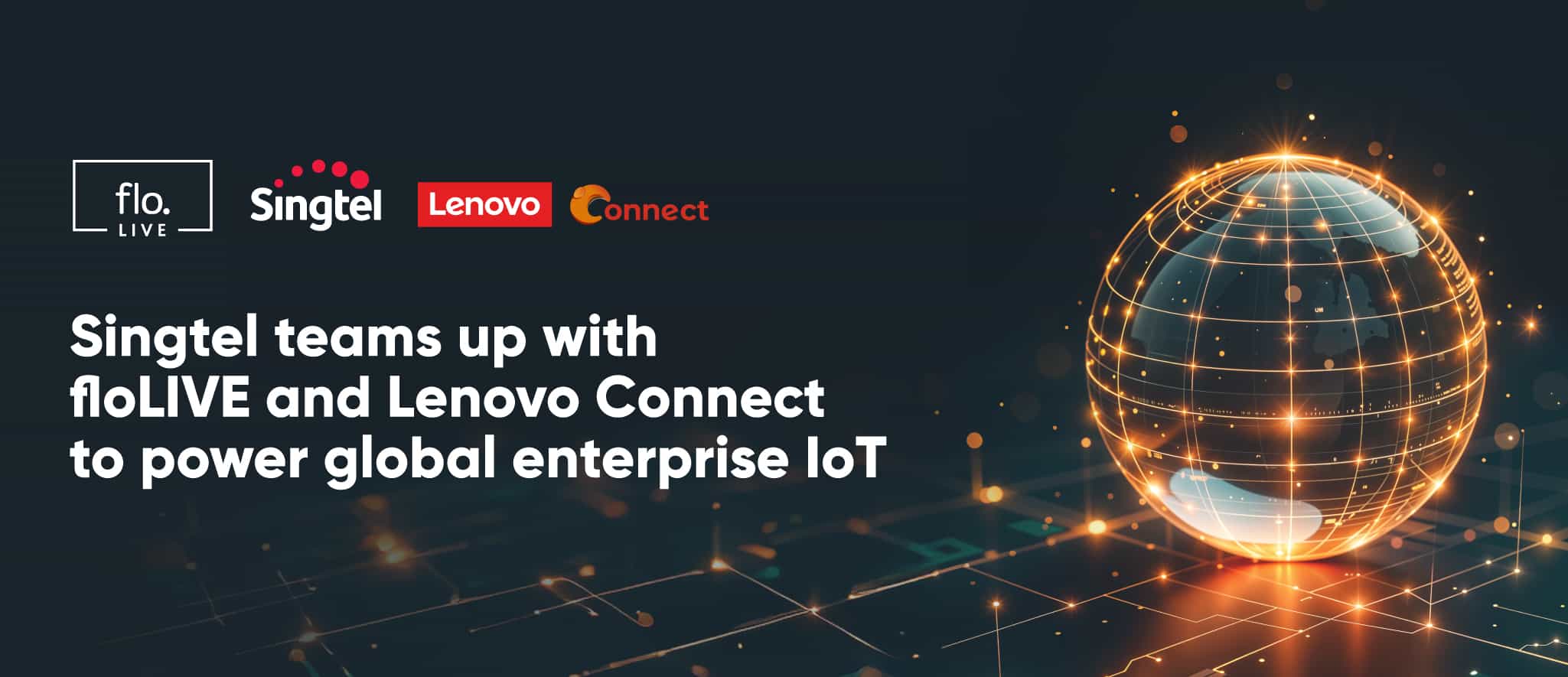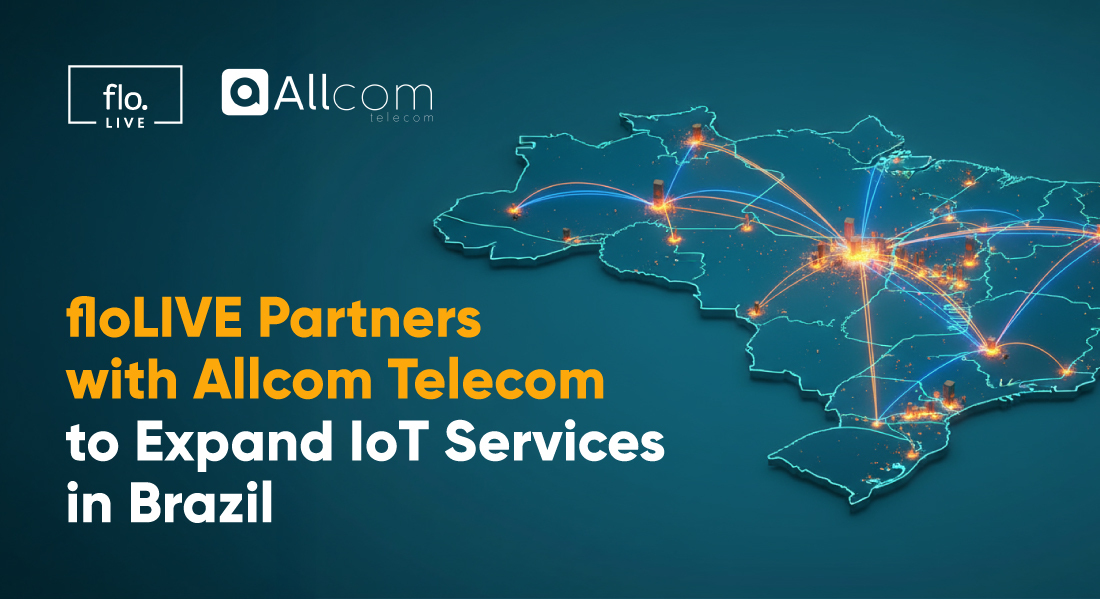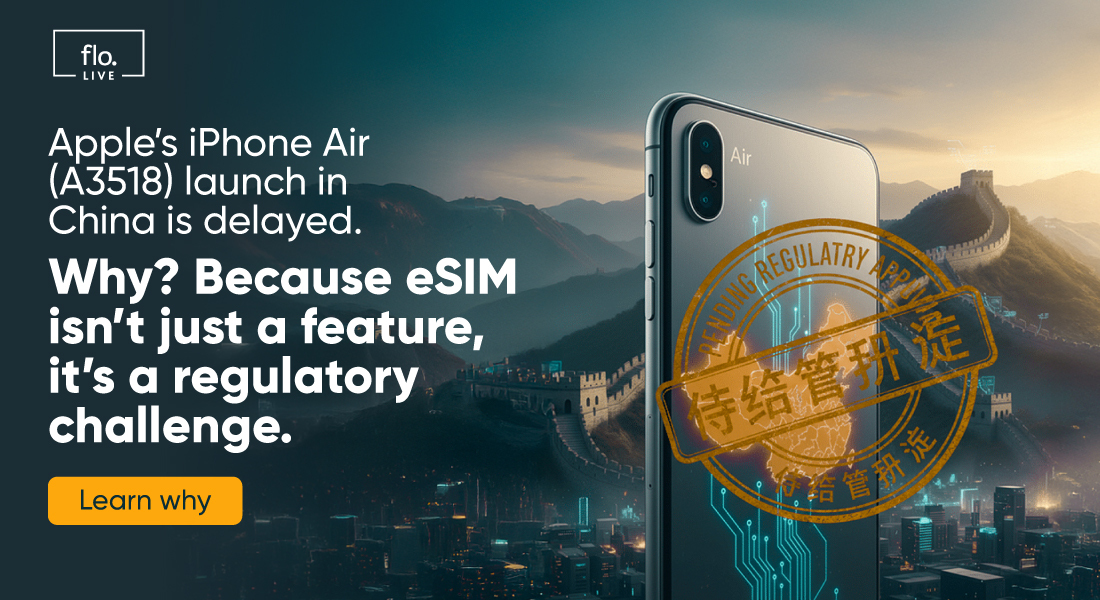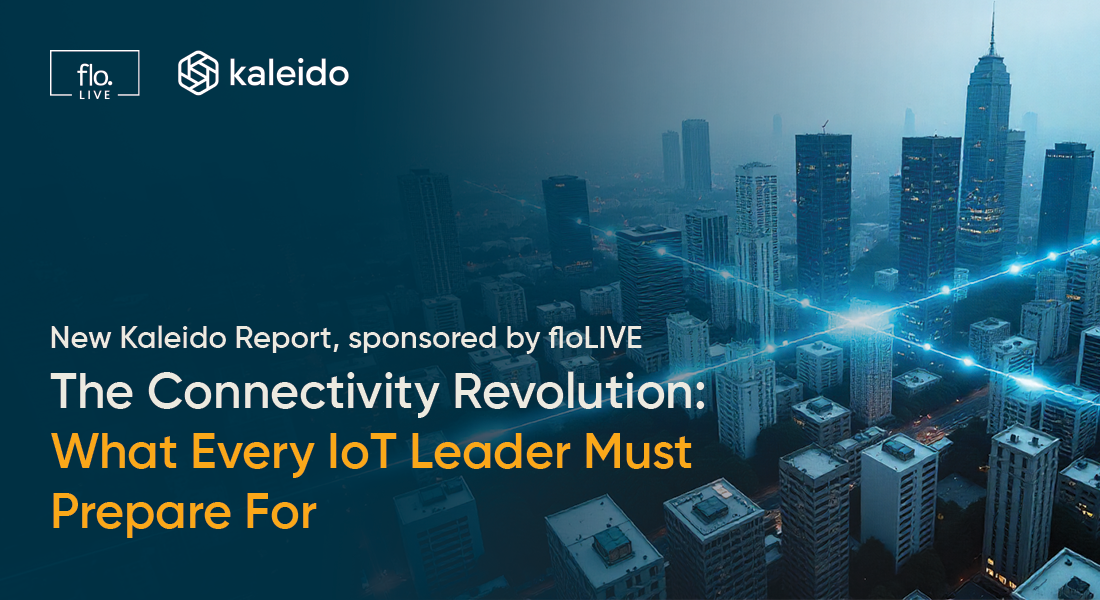Page Contents
Best IoT Platforms for Enterprises: 5 Tools to Know in 2025

Page Contents
What Are IoT Platforms?
IoT platforms are integrated software solutions to manage, connect, and control internet of things (IoT) devices. They offer a centralized interface that bridges hardware (such as sensors and gateways) with software applications and analytics tools.
These platforms handle device provisioning, connectivity, security, data ingestion, and actuation, making device deployment and operation more efficient. By abstracting complex infrastructure details, IoT platforms allow enterprises to focus on building business-specific solutions rather than managing the underpinning technology stack.
For enterprises, IoT platforms provide scalability and reliability when integrating thousands or millions of devices. They include standardized frameworks for handling firmware updates, remote device management, real-time monitoring, and data routing. As the number and type of connected devices grow, IoT platforms ensure secure communication, interoperability, and compliance with industry standards.
This is part of a series of articles about IoT networking
Key Features of IoT Platforms for Enterprises
Device Connectivity and Provisioning
Enterprise IoT platforms support a wide range of connectivity protocols, including MQTT, CoAP, HTTP, and AMQP, to ensure compatibility with diverse device ecosystems. These protocols are optimized for constrained environments, enabling low-latency, lightweight communication across various network conditions. Platforms often include protocol translation gateways to unify data streams and abstract the underlying communication complexities for developers.
Support for WiFi, Ethernet, LPWAN (e.g., LoRaWAN, NB-IoT), and cellular connectivity is standard in most enterprise-grade platforms. Cellular support often includes SIM provisioning and remote SIM management (eSIM), allowing devices to connect securely to mobile networks without manual configuration. This simplifies large-scale deployments in mobile or geographically dispersed environments, ensuring continuous connectivity and efficient onboarding of devices.
Data Handling Capabilities
Enterprise IoT platforms ingest, process, and store diverse data streams (including telemetry, events, and logs) from myriad device types. Real-time and batch processing pipelines allow for immediate insights or long-term historical analysis. Data handling features encompass transformation, normalization, and enrichment to ensure consistent, interoperable data models.
Enterprises also rely on security and privacy controls for sensitive data. Leading platforms support data encryption, access controls, and data residency options to meet regulatory demands. Data life cycle policies — including retention, deletion, and archival — help organizations balance cost and compliance. APIs and connectors enable seamless movement of data into visualization dashboards, business applications, or machine learning models.
Advanced Analytics and Machine Learning
Modern IoT platforms integrate analytics and machine learning capabilities to drive automation and insight. They provide tools for descriptive analytics, anomaly detection, predictive maintenance, and event-driven response scenarios. Built-in machine learning frameworks allow enterprises to create, deploy, and retrain models based on real-world device data without moving data outside the platform, enhancing privacy and compliance.
Platforms often include visual development environments, prebuilt analytics components, and integration with popular data science tools. These features allow domain experts to iterate quickly on models and rules, identify operational inefficiencies, and unlock new service opportunities based on predictive or prescriptive analytics.
API Accessibility and Customization
API accessibility is fundamental for extensibility, allowing enterprises to integrate IoT platforms with existing IT systems and third-party applications. Platforms expose restful APIs, WebSockets, or MQTT endpoints for device interaction, control, and data retrieval. Well-documented APIs enable organizations to build custom dashboards, mobile apps, or workflow engines tailored to their unique operational needs.
Customization functions go beyond basic integrations, encompassing rules engines, scripting interfaces, and user-role management. Enterprises can define bespoke event-processing logic, automate device behaviors, or embed IoT functionality into business processes. This adaptability supports digital transformation initiatives and rapid iteration as requirements evolve.
Integration with Edge and Cloud Systems
Edge integration enables data processing and decision-making closer to devices, reducing latency and bandwidth consumption. Platforms offer edge agent frameworks, container support, and synchronization protocols for reliable bi-directional communication between cloud and edge nodes. This approach is essential for mission-critical or bandwidth-constrained environments.
Cloud integration delivers high availability, scalable storage, controlled access, and global device reach. Enterprises benefit from hybrid architectures that leverage both cloud and edge for optimized data flow and workload placement. Tight integration with enterprise cloud ecosystems supports unified identity management, workflow orchestration, and advanced analytics.
Related content: Read our guide to IoT connectivity platforms
Notable IoT Platforms for Enterprises
1. floLIVE

floLIVE is a connectivity-first IoT platform offering a cloud-native Connectivity Management Platform (CMP) tightly integrated with its own IoT core network and BSS. It delivers local, compliant, low-latency connectivity through a globally distributed architecture, extensive IMSI library, and local breakouts/POPs, avoiding the pitfalls of permanent roaming while providing single-pane-of-glass control at scale.
General features include:
- Global-local connectivity: floLIVE provides local connectivity in key markets via a distributed array of local packet cores/POPs, enabling data sovereignty and predictable performance.
- Multi-IMSI & eUICC options: Patented multi-IMSI with autonomous or OTA switching (including use within eUICC) for single-SKU global deployments and improved resilience.
- Connectivity Management Platform (CMP): Single interface for SIM lifecycle, real-time monitoring, alerting, rules, and API-first integration.
Enterprise features include:
API-driven operations & single-pane visibility: Integrate once to manage fleets, usage, and policies globally; support for 2G/3G/LTE/LTE-M/NB-IoT, with a path to 5G.industrial automation, enterprise mobility, and security systems. It helps organizations minimize downtime, simplify global logistics, and ensure connectivity compliance across diverse markets.
Own-and-operate telco stack: IoT-focused core network (Kubernetes-based, cloud-native) plus BSS for real-time rating/charging and flexible plans.
Compliance & sovereignty by design: Local breakout and country-specific IMSIs help address permanent-roaming restrictions and regulatory mandates.

2. AWS IoT Core

AWS IoT Core is a managed cloud service that enables secure, bi-directional communication between IoT devices and the AWS Cloud. It abstracts infrastructure management, allowing developers to connect, manage, and scale device fleets without provisioning servers. The platform supports multiple protocols, including MQTT, HTTP, and WebSockets.
General features include:
- Protocol flexibility: Supports MQTT (v3.1.1 and v5), over WebSockets, HTTPS and LoRaWAN for diverse connectivity needs
- Device gateway: Manages device connections at scale, enabling low-latency, bidirectional communication
- Message broker: High-throughput, publish/subscribe messaging with topic-based routing and fine-grained access control
- Rules engine: Processes and routes device data based on user-defined business logic
- Device shadows: Maintains device state information for offline or intermittently connected devices
Enterprise features include:
- End-to-end security: Mutual authentication and encryption with X.509 certificates, SigV4, and custom token support
- Device advisor: Cloud-based testing tool for validating device behavior and compliance during development
- Data filtering and transformation: Filtering, transformation, and conditional action on device data
- Scalability: Supports millions of devices and topics with automatic scaling and low infrastructure overhead
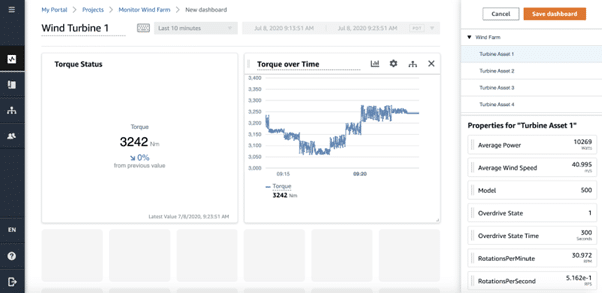
Source: Amazon
3. Microsoft Azure IoT Suite

Microsoft Azure IoT Suite is a set of cloud-managed services and edge runtime tools that enable organizations to connect, monitor, and control IoT devices and assets. It includes services like IoT Hub, IoT Device Provisioning Service, Azure Digital Twins, and IoT Edge, enabling reliable data ingestion, control, and scalable device management.
General features include:
- Flexible architecture support: Supports cloud-first and edge-first deployments to accommodate different business and technical needs
- Device SDKs: Open-source SDKs for building secure apps across various platforms, including embedded systems
- Protocol compatibility: Support for MQTT, HTTP, AMQP, and industrial standards via connectors in Azure IoT Operations
- Device and asset registry: Centrally manage devices and assets using Azure Device Registry, with support for metadata and connectivity configuration
- IoT Hub and DPS: Scalable infrastructure for device provisioning, telemetry ingestion, and cloud-to-device messaging
Enterprise features include:
Analytics and AI integration: Compatible with Azure Stream Analytics, Azure Machine Learning, and Power BI for real-time processing and visualization
Edge runtime capabilities: Local message processing, protocol translation, and cloud integration using Azure IoT Edge or IoT Operations
Azure IoT Operations: Unified management of edge-based IoT assets with Azure Arc-enabled services and Kubernetes integration
Scalability and reliability: Designed for global IoT deployments with features for high availability and disaster recovery
Secure connectivity: Encryption, authentication (including X.509, SAS tokens), and policy-based access control
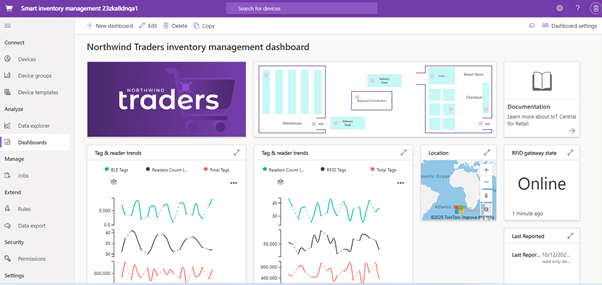
Source: Microsoft
4. Bosch

Bosch IoT Suite is a modular set of cloud services and software components to manage, connect, and analyze IoT devices and data. Developed by Bosch, the suite supports use cases across industries like automotive, smart cities, agriculture, and HVAC. It enables communication with connected assets such as vehicles, industrial machines, and building sensors.
General features include:
- Modular architecture: A family of services that covers device management, data processing, and edge analytics
- Lifecycle device management: Register, update, monitor, and decommission devices using secure, scalable tooling
- IoT data services: Collect, transform, analyze, and store data from millions of sensors and devices
- Edge computing support: Enable intelligent local processing for latency-sensitive or offline-capable solutions
- Open source foundation: Built on and contributes to Eclipse IoT projects, ensuring interoperability and openness
Enterprise features include:
- Over-the-air updates: Centralized infrastructure for secure, large-scale software and firmware distribution
- AIoT enablement: Integration of AI-driven capabilities at the edge to support predictive analytics and automation
- Data-driven insights: Use Bosch IoT Insights to visualize and extract knowledge from operational IoT data
- High security standards: Enterprise-grade security protocols rooted in Bosch’s domain expertise and compliance models
- Edge integration: Bosch IoT Edge supports protocols and deployments tailored to industry-specific environments
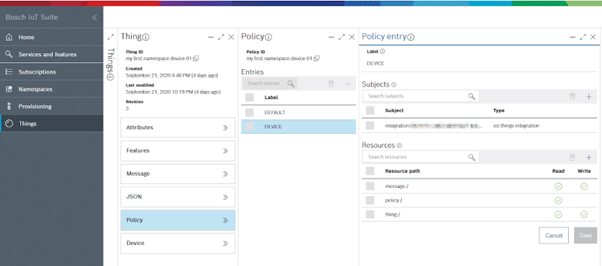
Source: Bosche
5. Losant

Losant is a low-code IoT application enablement platform that allows enterprises to build, deploy, and scale connected solutions. Intended for cloud and edge environments, it simplifies development with a visual workflow engine, data visualization tools, and device management features.
General features include:
- Low-code visual workflow engine: Drag-and-drop interface for building cloud and edge logic without writing code
- Multitenancy and branding: Built-in support for multi-customer architectures, custom domains, and fully branded user interfaces
- End-user experiences: Create secure, tailored interfaces for your customers with role-based access and SSO integration
- Data visualization: Custom dashboards with built-in widgets and support for batch analytics via Jupyter notebooks
- Device management: Model and manage digital twins, ingest data via MQTT, webhooks, and connectors
Enterprise features include:
- Industrial protocols: Built-in connectors for Modbus, OPC UA, BACnet, SNMP, and more to support industrial automation
- Remote deployment and management: Easily push updates and logic changes to edge devices in the field
- Store and forward: Prevent data loss by buffering data during intermittent connectivity
- Scalable device communication: Supports thousands of devices with a secure, scalable MQTT broker
- ISO 27001 certified security: Follows industry-standard security practices and undergoes regular third-party audits
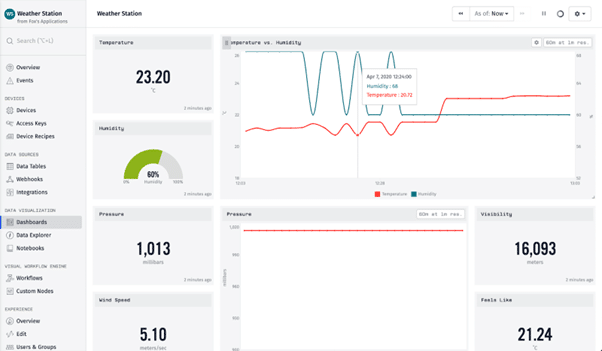
Source: Losant
Conclusion
IoT platforms are essential infrastructure for enterprises aiming to deploy and manage connected systems at scale. By providing standardized tools for connectivity, data processing, security, and integration, these platforms reduce operational complexity and accelerate innovation. As IoT ecosystems grow, selecting the right platform becomes critical to ensure performance, flexibility, and long-term sustainability.

Join Our Newsletter
Get the latest tips and insights in our monthly newsletter.





